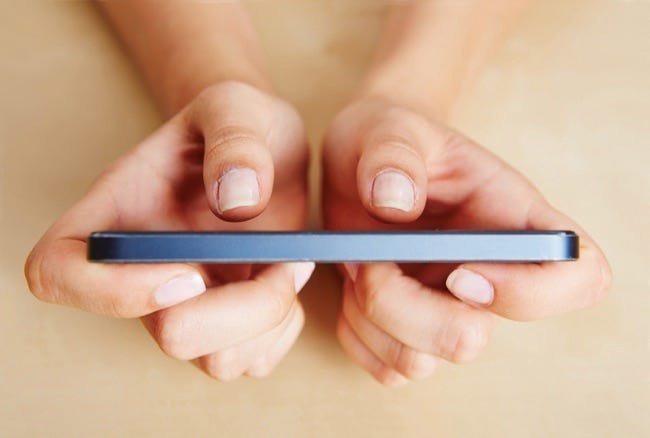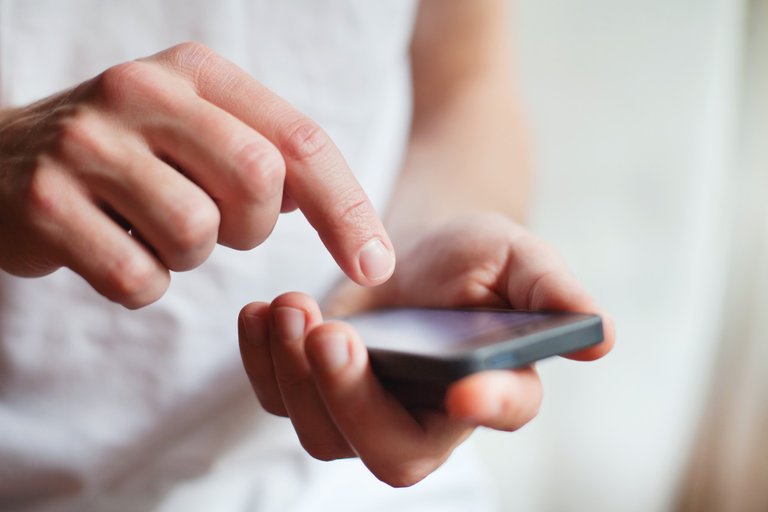
Smartphone usage
Over the past few weeks, I have experienced shooting pain in my left shoulder and elbow. Each morning, I woke up with an almost stiff shoulder. I was greatly concerned. I knew what RSI was and I thought I took enough measures to prevent it - obviously, I did not.
With hindsight, I realized I had been using more of my left hand/thumb for most of my Internet surfing on the phone. This caused undue strain on the muscles and tendons of my left arm and developed into shooting pain. With the advice of my physician, and wider research on my own on the subject (which I will be sharing with you below), I was able to get some relief from the pain.

Shooting pain in the shoulder
Do you know that mere bending forward to look at your smartphone can put a pressure of 27 pounds on your spine? With the increasing use of smartphones/handheld mobile devices, and more people browsing the Internet, sending emails, tweeting, and texting, injuries from these activities are also on the rise.

Undue strain on the neck due to poor posture
Repetitive Strain Injury (RSI) comprises of several conditions, which cause numbness and pain in a particular part of the body that you use for repetitive tasks. The parts of the body often affected are the arms/hands, shoulder/neck, and upper back.
Smartphone related Repetitive Strain Injuries (RSI), especially those of the neck and upper back were unheard of a couple of years ago. However, today, they have become recurrent cases in hospitals across all ages from upwardly mobile professionals, to gaming enthusiasts. Ordinarily, neck and back pains are often more common with people advancing in age, but younger people are now seeking and getting treatment for "Texting Neck" disorder as well.
Another injury from the overuse of the thumbs is the "Texting thumb." This disorder is newer and more common than the "Texting Neck" disorder. This injury arises from the fact that our thumbs are not naturally designed for constant swiping and texting on a phone screen.
If your life is your phone (mine is sometimes :-) ), here are 7 ways that can help you reduce these injuries.
1. Do not grip your phone tightly. Relax your wrists and keep them as straight as you can. You can get a protective case for your device. This will help you reduce the strength of grip whenever you hold the device.

2. Avoid using the device in awkward positions such as cradling it between your shoulder and ear. You can use hands-free accessories (microphones, headsets etc.) to avoid such awkward positions. In addition, a portable keyboard will come quite useful in helping you maintain a healthy posture while using your mobile device.

3. Reduce the distance between your phone and your eyes. The greater the distance, the more inclined you will be to bend your head and neck forward. Keep the phone at chin or above chest level for the best spinal posture. Always maintain a good posture whenever you are typing or texting. Avoid leaning forward. To avoid strains and pains in your upper body, maintain upright head and shoulders.

4. Whenever you type with your thumb, do it with the pad of the thumb and not the tip of the thumb. Typing with the tip can bend your thumb out of shape and lead to serious injury.

5. You can also alternate typing between your thumbs and fingers. If you can, use the other fingers instead of the thumb for typing.

6. Limit the use of your mobile device. You really should reduce the amount of time you devote to clicking, swiping, and texting. Develop the habit of sticking to 20-minute sessions for your phone use, and take 20-second breaks in between to focus on a distant object at least 20 feet away. This will reduce strain and stress in the eyes, which often arise from staring too long at a screen.

7. Exercise with some stretches during these breaks.
- Make a loose fist and rotate your wrist ten times clockwise, and ten times anticlockwise.
- Make several repetitions of the shoulder roll, forward and backwards.
- Stretch your fingers and thumbs by making a tight fist and releasing them fast with no pain.
- Use your thumb to touch the tips of your other fingers starting with the little finger, and ending with the index finger.
- Relieve your neck by gently turning your head to the left, aim your nose towards the left shoulder and keep it that way for 25 seconds. Repeat for the right side.
When ignored and left unattended, Repetitive Strain Injury can cause severe disability. As you use smartphones and other hand-held mobile devices to make life easier for you, do not forget to protect your health by observing these precautions above.
-------------------------------------------------------------------
Did you find this post educative and helpful? Kindly Resteem, Upvote, and Follow me @kachi
-------------------------------------------------------------------
Image Credits: 1, 2, 3, 4, 5, 6, 7, 8, 9
References:
Ontario Chiropractic Association
Really good tips and very useful as i'm on the phone almost the entire day dealing with clients.
Text neck is my biggest problem and i try to actively raise my phone so there isn't so much strain. I need that keyboard :)
Thanks. Yes. We all seem to be more on the phone these days. RSI is a huge issue of which we need to be aware.